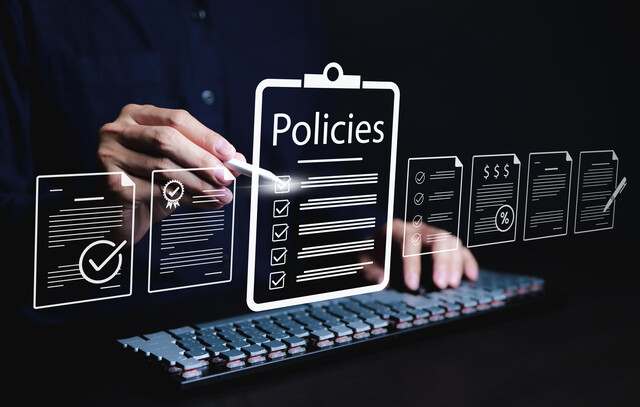Online Class: Economics 201

no certificate
with CEU Certificate*
-
16Lessons
-
39Exams &
Assignments -
640Students
have taken this course -
15Hours
average time -
1.5CEUs
Course Description
Introduction to Real-world Economics: Bridging the Gap Between Theory and Practicality
Economics is deeply woven into the fabric of our everyday lives. Each day, we navigate decisions influenced by economic principles, from simple choices at the grocery store to complex financial strategies. This interconnectedness has only grown stronger over the years, positioning economics at the heart of our personal, societal, and global dynamics.
Course Overview
Our primary objective in this course is to provide you with a robust understanding of economics, ensuring you're well-equipped to appreciate its broad spectrum of applications. We've meticulously designed this curriculum to demystify the fundamental tenets of economics, introducing you to key concepts such as supply and demand dynamics, the role of interest rates, and the impacts of inflation.
While economics can often seem abstract and intimidating, our approach is grounded in real-world examples. We want to show you how deeply economics is entrenched in your daily life and the greater world. By understanding economic theories, you'll gain insights into the forces propelling our economies, recognize the confluence of statistics and economics in shaping financial forecasts, and leverage this knowledge for both personal and professional advantages.
From comprehending the rationale behind taxes to acquiring investment insights and anticipating market trends, our course presents a wealth of valuable insights.
Detailed Curriculum Outline
-
Lesson 1: Supply and Demand Model - Delve into the foundational concept that drives markets and pricing. Understand the factors that influence these dynamics.
-
Lesson 2: Supply and Demand Curves and Elasticity - Explore how changes in the marketplace can affect product prices and consumer demand.
-
Lesson 3: Marginalism - Unpack the importance of incremental changes and how they can have significant implications for decision-making in business and personal finance.
-
Lesson 4: Fiscal Policy and Monetary Policy - Discover how governments and central banks steer economies towards growth and stability.
-
Lesson 5: Economic Growth, Stimulus, and Stabilization - Examine the tools at the disposal of policymakers to foster economic expansion and mitigate recessions.
-
Lesson 6 & 7: Interest Rates - Dive deep into the world of interest rates, understanding their profound effect on borrowing, lending, and overall economic health.
-
Lesson 8: Inflation and Deflation - Decode the causes and consequences of rising and falling prices and their influence on purchasing power.
-
Lesson 9: Financial Markets and Investing - Navigate the intricacies of the financial world, gaining insights into smart investment strategies.
-
Lesson 10: Taxation Structures - Understand various tax systems, their implementation, and their impact on individuals and businesses.
-
Lesson 11: Public Finance - Explore how governments manage budgets, fund projects, and ensure fiscal responsibility.
-
Lesson 12: Revenue and Economic Forecasting - Learn the art and science of predicting future economic trends based on current data.
-
Lesson 13: Economic Indicators and Statistical or Probability Economics - Familiarize yourself with the key indicators that economists use to gauge the health of an economy.
-
Lesson 14: Marriage of Statistics and Econometrics - Understand the synergy between statistical techniques and economic data in making informed predictions.
-
Lesson 15: Economic Books and Additional Resources - Delve into seminal works that have shaped the field of economics and discover resources to continue your economic journey.
-
Lesson 16: Final Thoughts - Reflect on the learnings from the course and how you can apply these insights in real-world scenarios.
Why Enroll?
If you've ever wondered about the intricacies of our economic systems or aimed to make more informed financial decisions, this course offers an invaluable foundation. We believe in empowering our students with knowledge that translates to real-life advantages, making you more informed citizens, professionals, and decision-makers. Join us on this enlightening journey into the world of economics.
- Completely Online
- Self-Paced
- Printable Lessons
- Full HD Video

- 6 Months to Complete
- 24/7 Availability
- Start Anytime
- PC & Mac Compatible
- Android & iOS Friendly
- Accredited CEUs

Course Lessons
Lesson 1. Balancing Act: Market Structures and Economic Equilibrium
Supply and demand determine pricing and quantity in markets, influencing economic behavior from micro to macro levels. The model extends to analyzing market structures like monopolies and competition, exploring how different entities affect and are affected by market forces.Lesson 2. Understanding Supply and Demand Curves
Price equilibrium occurs when the supply meets demand, affected by elasticity which varies with the necessity of goods. Elasticity is determined by the percentage change in quantity over price, showing how price-sensitive a product's market is.Lesson 3. Marginalism in Economics: A Historical and Practical Overview
Marginalism examines how subjective values influence consumer spending, considering both the subjective theory of value and the objective theory of money. Key concepts include total utility, marginal utility, and the law of diminishing returns, impacting consumer demand and market dynamics.Lesson 4. Balancing Acts: Understanding Federal Economic Strategies
Inflation devalues money and affects purchasing power, requiring fiscal and monetary policies to seek balance for stable economic growth. Achieving economic equilibrium involves managing spending and money supply to encourage healthy economic activity and development.Lesson 5. Strategic Stimulus Solutions for Economic Revival
The Federal Reserve's unique ability to adjust fiscal levers plays a pivotal role in transforming downturns into growth opportunities. Successful stimulus packages require careful planning to ensure immediate, significant economic impacts without long-term negative consequences.Lesson 6. Nominal vs. Real Interest Rates: What You Need to Know
Nominal and real interest rates represent two sides of the interest rate coin, with real rates adjusting for inflation to offer a clearer economic picture. Understanding this distinction is vital for making informed financial decisions, particularly when it comes to investments and purchasing power over time.Lesson 7. Interest Rates and Economic Health: An Intricate Relationship
Interest rates serve as a critical tool for controlling economic flow; lower rates encourage spending and investment, thus stimulating economic growth, while higher rates help prevent inflation. The complex interplay of rates with indicators like GDP and CPI provides insights into economic trends and potential recessions, making them vital to understanding market conditions.Lesson 8. Economic Cycles: Decoding Booms and Recessions
Inflation, a key economic metric linked to changes in general price levels, has been analyzed through the monetarist lens of money supply and Keynesian views on demand, with different indexes like CPI and PPI used for measurement. Types like demand-pull and monetary inflation demonstrate the multifaceted reasons behind these economic changes, impacting policy and daily life.Lesson 9. Financial Markets: Structures, Types, and Their Functions
Financial markets are hubs for trading securities and commodities, impacting individual and national economies significantly. They function to balance capital between lenders and borrowers and encompass various types like capital, bond, and derivatives markets.Lesson 10. A Journey Through Taxation: From Historical Foundations to Modern Complexities
Rooted in historical events, the U.S. taxation framework now encompasses wide-ranging taxes including income, property, and consumption to fund federal and state initiatives. The legislative evolution, notably influenced by amendments, reflects a shift towards more inclusive and income-responsive taxation policies.Lesson 11. Fiscal Choices: A Concise Examination
The lesson delves into public finance, focusing on how governments allocate resources to enhance economic conditions and citizen welfare, exploring public economics and market failure intervention. A critical component discussed is cost-benefit analysis (CBA), a vital tool for evaluating the impacts and optimal allocations of government expenditures.Lesson 12. The Art and Science of Revenue Prediction
Revenue forecasting is a crucial management skill involving analytical techniques to predict future financial resources, utilizing methods like trend research and statistical analysis to maintain a stable budget and ensure decision-making accuracy.Lesson 13. Economic Indicator Breakdown
Economic indicators serve as essential tools for assessing various sectors and overall health of the economy, categorized into leading, coincident, and lagging types, each with unique predictive roles. The Federal Open Market Committee utilizes these indicators to formulate effective monetary policies, balancing macro and microeconomic perspectives.Lesson 14. Understanding Econometrics: A Brief Introduction
Econometrics, the blend of economics and statistics, analyzes empirical data to propose theories and develop predictive models. With roots in the 20th century and significant contributions like Haavelmo's probability approach, it has evolved into a crucial discipline for economic analysis.Lesson 15. Your Guide to Essential Economic Literature
Expanding knowledge in economics involves integrating theory with practical, real-world developments through curated readings and strategic resources. Diverse media outlets alongside seminal works by economists and international economic bodies equip learners with the tools necessary to interpret the complexities of the modern economy.Lesson 16. Understanding Economic Fundamentals
After traversing the key themes of Economics Made Easy, you gain a perspective on how economics intertwines with personal and societal decision-making. This foundational course encourages continuous learning as you explore broader economic discussions and resources.
Learning Outcomes
- Compare and contrast market structures like monopoly and perfect competition, identifying their influence on supply, demand, and pricing strategies.
- Define and illustrate the economic equilibrium using the supply and demand model, explaining how market dynamics achieve a balance between supply and demand.
- Calculate the elasticity of a product given percentage changes in price and quantity using the elasticity formula.
- Describe how supply and demand reach equilibrium when plotted on a graph.
- Differentiate between total utility and marginal utility in the context of consumer behavior and market supply and demand dynamics.
- Recognize how the subjective theory of value influences consumer decision-making patterns based on personal satisfaction and utility.
- Define fiscal policy as the government's power to tax and spend to achieve economic goals.
- Describe the impact of monetary policy on inflation and economic output through the regulation of money supply and credit.
- Describe key components and considerations of an effective government stimulus package in achieving short-term economic growth.
- Recognize the role of the Federal Reserve Bank in managing economic downturns through stimulus options.
- Define interest rate as the cost of borrowing money expressed as a percentage of the principal.
- Explain the impact of interest rate fluctuations on consumer spending and economic growth.
- Define how changes in interest rates influence consumer spending and investment decisions, using current economic indicators.
- Demonstrate mastery of lesson content at levels of 70% or higher.
Additional Course Information

- Document Your Lifelong Learning Achievements
- Earn an Official Certificate Documenting Course Hours and CEUs
- Verify Your Certificate with a Unique Serial Number Online
- View and Share Your Certificate Online or Download/Print as PDF
- Display Your Certificate on Your Resume and Promote Your Achievements Using Social Media

Choose Your Subscription Plan
No Certificate / No CEUs
This course only
| Includes certificate | X |
| Includes CEUs | X |
| Self-paced |

|
| Instructor support |

|
| Time to complete | 6 months |
| No. of courses | 1 course |
Certificate & CEUs
This course only
| Includes certificate |

|
| Includes CEUs |

|
| Self-paced |

|
| Instructor support |

|
| Time to complete | 6 months |
| No. of courses | 1 course |
Certificates & CEUs
Includes all 600+ courses
| Includes certificate |

|
| Includes CEUs |

|
| Self-paced |

|
| Instructor support |

|
| Time to complete | 12 Months |
| No. of courses | 600+ |
Certificates & CEUs
Includes all 600+ courses
| Includes certificate |

|
| Includes CEUs |

|
| Self-paced |

|
| Instructor support |

|
| Time to complete | 24 Months |
| No. of courses | 600+ |
Student Testimonials
- "Thank you very much for all your answers to my emails. Through this course I can see you are very well prepared instructor. Congrats for the course." -- Mercedes P.
Related Courses
-
 72 hours
7.2 CEUs
Writing Help Course Bundle
+ More Info
72 hours
7.2 CEUs
Writing Help Course Bundle
+ More Info
-
 45 hours
4.5 CEUs
Event Management Course Bundle
+ More Info
45 hours
4.5 CEUs
Event Management Course Bundle
+ More Info
-
 5 hours
0.5 CEUs
Critical Thinking Skills
+ More Info
5 hours
0.5 CEUs
Critical Thinking Skills
+ More Info
-
 11 hours
1.1 CEUs
Mediation 101
+ More Info
11 hours
1.1 CEUs
Mediation 101
+ More Info
-
 11 hours
1.1 CEUs
How to Write Effective Policies and Procedures
+ More Info
11 hours
1.1 CEUs
How to Write Effective Policies and Procedures
+ More Info
-
 7 hours
0.7 CEUs
Conflict Resolution
+ More Info
7 hours
0.7 CEUs
Conflict Resolution
+ More Info
-
 9 hours
0.9 CEUs
Party Planning 101
+ More Info
9 hours
0.9 CEUs
Party Planning 101
+ More Info
-
 10 hours
1.0 CEUs
Contract Law 101 - An Introduction
+ More Info
10 hours
1.0 CEUs
Contract Law 101 - An Introduction
+ More Info
-
 12 hours
1.2 CEUs
Telephone Skills and Quality Customer Service
+ More Info
12 hours
1.2 CEUs
Telephone Skills and Quality Customer Service
+ More Info
-
 7 hours
0.7 CEUs
Accounts Payable Training
+ More Info
7 hours
0.7 CEUs
Accounts Payable Training
+ More Info
-
 12 hours
1.2 CEUs
How to Write Case Studies
+ More Info
12 hours
1.2 CEUs
How to Write Case Studies
+ More Info
-
 5 hours
0.5 CEUs
Operations Management 101
+ More Info
5 hours
0.5 CEUs
Operations Management 101
+ More Info
-
 7 hours
0.7 CEUs
Negotiation Skills
+ More Info
7 hours
0.7 CEUs
Negotiation Skills
+ More Info
-
 7 hours
0.7 CEUs
Creating an Effective Sales Team
+ More Info
7 hours
0.7 CEUs
Creating an Effective Sales Team
+ More Info
-
 6 hours
0.6 CEUs
Confidence Building
+ More Info
6 hours
0.6 CEUs
Confidence Building
+ More Info
-
 14 hours
1.4 CEUs
Journalism 101
+ More Info
14 hours
1.4 CEUs
Journalism 101
+ More Info
-
 5 hours
0.5 CEUs
Habits of Millionaires
+ More Info
5 hours
0.5 CEUs
Habits of Millionaires
+ More Info
-
 7 hours
0.7 CEUs
Healthy Relationships
+ More Info
7 hours
0.7 CEUs
Healthy Relationships
+ More Info
-
 10 hours
1.0 CEUs
Mastering Sales Skills 101
+ More Info
10 hours
1.0 CEUs
Mastering Sales Skills 101
+ More Info
-
 5 hours
0.5 CEUs
Fundraising 101
+ More Info
5 hours
0.5 CEUs
Fundraising 101
+ More Info
-
 5 hours
0.5 CEUs
Listening Skills
+ More Info
5 hours
0.5 CEUs
Listening Skills
+ More Info
-
 15 hours
1.5 CEUs
Customer Service 101
+ More Info
15 hours
1.5 CEUs
Customer Service 101
+ More Info
-
 9 hours
0.9 CEUs
Customer Relationship Management
+ More Info
9 hours
0.9 CEUs
Customer Relationship Management
+ More Info
-
 8 hours
0.8 CEUs
Assertiveness Training
+ More Info
8 hours
0.8 CEUs
Assertiveness Training
+ More Info
-
 2 hours
0.2 CEUs
Understanding Insurance Types
+ More Info
2 hours
0.2 CEUs
Understanding Insurance Types
+ More Info
-
 11 hours
1.1 CEUs
Writing Effective Emails in the Workplace
+ More Info
11 hours
1.1 CEUs
Writing Effective Emails in the Workplace
+ More Info
-
 5 hours
0.5 CEUs
Creative Thinking Skills
+ More Info
5 hours
0.5 CEUs
Creative Thinking Skills
+ More Info
-
 5 hours
0.5 CEUs
Emotional Intelligence
+ More Info
5 hours
0.5 CEUs
Emotional Intelligence
+ More Info
-
 7 hours
0.7 CEUs
Innovative Thinking Skills
+ More Info
7 hours
0.7 CEUs
Innovative Thinking Skills
+ More Info
-
 6 hours
0.6 CEUs
Business Branding 101
+ More Info
6 hours
0.6 CEUs
Business Branding 101
+ More Info






